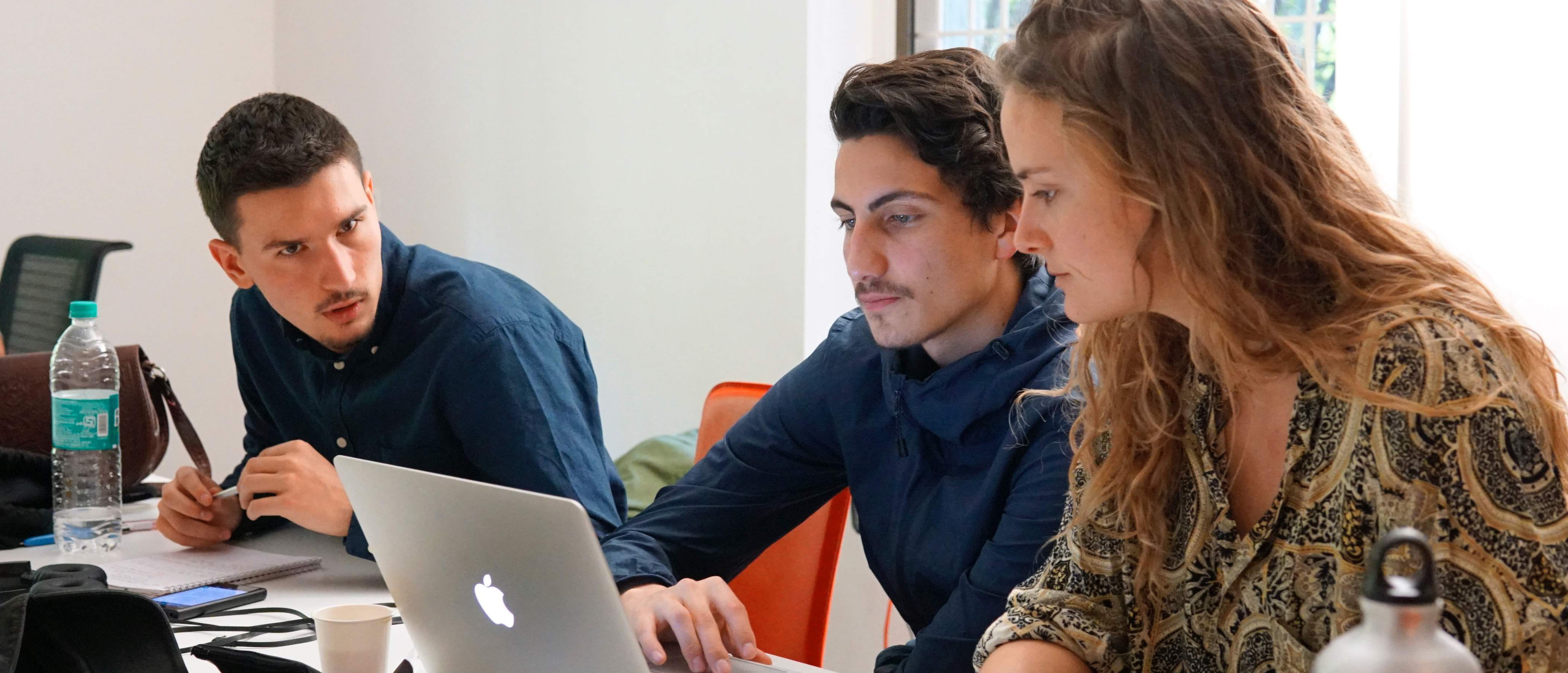The final day of the INSSINC program had arrived. Entrepreneurs, social innovators, NGOs and innovation enablers had been invited to join the final presentations.
Day 8: Deliver
Final sprint and project presentation

All four teams knew they only had a few hours left before presenting their experience in its four main phases: discover, define, develop, and deliver.
The teams were suggested to select a single presenter, and had to deliver the whole presentation in under 7 minutes. In addition, each team had a table to show their projects. To do so, they had to produce a poster briefly explaining how they worked in the four phases, and display their final prototype with any useful visual illustrations. All the teams quickly assigned roles and responsibilities.
Walking into Swissnex at that time was an interesting sight: students walking around murmuring to themselves, people editing videos, others creating pitch decks, and the occasional power napper snoring in a corner. At around 5pm, the presenters had the opportunity to rehearse the presentations and receive some final feedback from the team. Until the last minute, students were buzzing around to get everything re
At 6:30pm, the doors finally opened. Upon entering, the guests could discover the whole journey on the walls: illustrations created by the tutor Shenwei (Vivi) Jiang were projected, and displayed the activities of the group day by day. Sebastien Hug, CEO of Swissnex and Consul General of Switzerland in India, kindly welcomed the group. One of the tutors, Gregory Pepper, was introduced as the moderator for the night.
The evening began with a panel discussion, during which the main partners of the INSSINC program explained the why, how, and what behind the 10-day social innovation sprint. Sebastien Hug retraced the coincidental conversation that started it all. Marc Laperrouza, Lecturer & Researcher at EPFL & UNIL, explained the importance of understanding sub-Saharan Africa, China, and India, in order to understand the next 25 years. He also outlined the three major characteristics of the program: interdisciplinarity, immersion, and social entrepreneurship. To this, Marius Aeberli, head of Education at the EPFL ECAL Lab added the importance of designing with a human-centered approach, with and for people, by going to meet them in person and truly understand their needs and constraints. In addition, prototyping and fast iterations, are the best way to test assumptions and work collectively on a commonly understood solution. Beatrice Scarioni, from Tech4Impact at the EPFL, explained the importance for an engineering school to explore bottom-up methods, and working on social issues at their source. Shahaab Jaberi, Program Manager for Communications & Outreach at the SELCO foundation, highlighted how the partners identified the communities to work with, and which problems to tackle. The iterative and co-creative process allowed to find issues that were worth solving, and also practically approachable in such a short sprint. Shripathy Hadigal, Program Manager for Global Replication, concluded the discussion by explaining the importance of co-creation throughout the time in Bangalore. Indeed, everyday the students would work and discuss their projects with the teams at the SELCO Foundation, who had the experience to steer them away from solutions that would be near-impossible to practically implement.
The moment had finally arrived for the students to present their work in front of a large audience. Each team was able to show their process, the problem they were tackling, the concept they were suggesting, and how they saw the project unfold. Many aspects of the solutions were demonstrated, from 3D model, to filmed demonstration, from financial breakdown, to technical specifications. After much applause and support, the teams returned to their prototypes to receive valuable feedback and praises. One thing was clear: all were impressed with how far the teams had come in such a short time, and many believed they had real potential for impact.
The evening was concluded with a buffet generously provided by Swissnex, and many interesting discussions with the local social entrepreneurial ecosystem about how the program could further collaborate and grow in the future.
The future of these solutions concepts is highly reliant on the teams themselves. SELCO Foundation regularly hosts students as interns in their offices for a few months, where the solutions could be further tested and implemented, and EPFL’s “Y Grant” is potentially available to those who are committed and want to see the ideas grow. Other options are possible, but all depends on the students.
Without a doubt, all who had taken part in the program had learned and grown. We trust that the concepts may grow, and flourish into scalable solutions.
